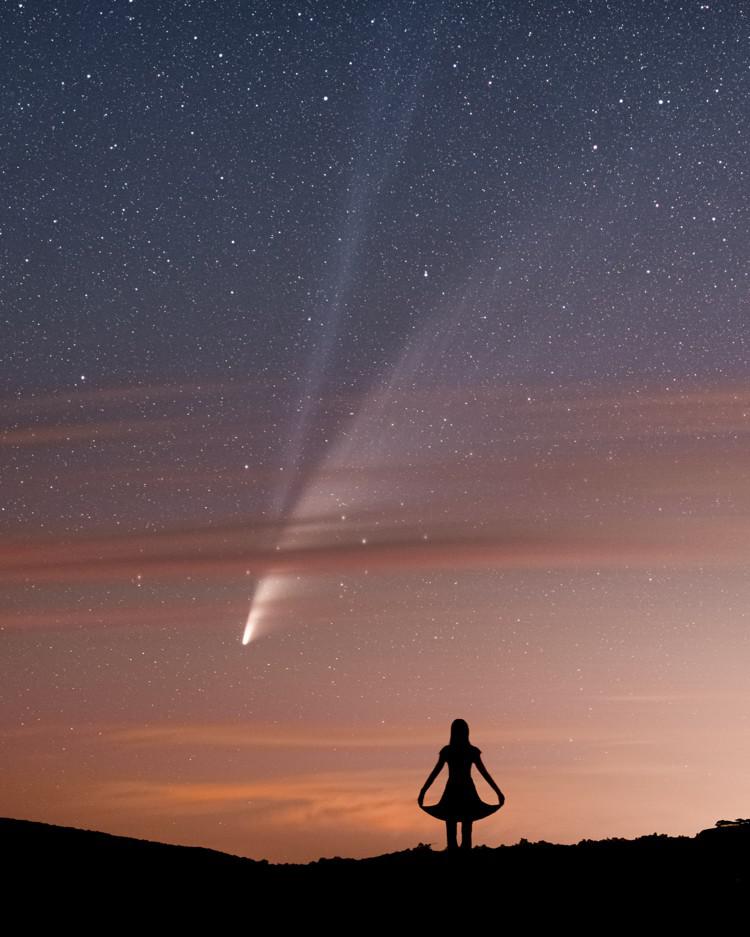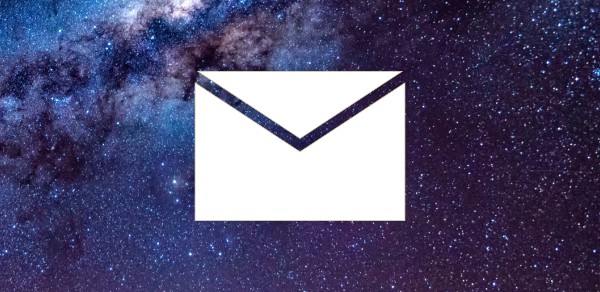This page describes an image Hello Comet, shall we dance?, by Robert Barsa, Slovakia
Caption:
Third place in the 2021 IAU OAE Astrophotography Contest, category Comets.
This beautiful and poetic image taken from Slovakia in July 2020 captures the comet C/2020 F3 (Neowise). The direction of the tails of the comet provides a clue as to the position of the Sun. In the past, the appearance of a comet in the skies could be accompanied by apprehension and even fear from those who did not know what these objects really are. Through careful observations and the applications of knowledge from physics, chemistry and geology, we now understand that comets are objects left over from the earliest days when the Solar System formed. The most distinctive features of a comet are the bluish ion (gas) tail, and whitish dust tail, which can extend for tens of millions of kilometres. These distinctive features, easily observable with the unaided eye together with an understanding of the science, are no longer cause for fear, rather they help us understand the history of our Solar System, and bring awe, joy and contemplation, as portrayed in this image.
Credit:
Robert Barsa/IAU OAE
DOI: 10.5281/zenodo.5290650
Related glossary terms:
Comet
, Cometary Tail
Categories:
Naked Eye Astronomy
, Solar System
License: Creative Commons Attribution 4.0 International (CC BY 4.0) Creative Commons Attribution 4.0 International (CC BY 4.0) icons
The media file captions presented on the OAE website were written, translated and reviewed by a collective effort from the OAE, the OAE Centers and Nodes, the OAE National Astronomy Education Coordinators (NAECs) and other volunteers. You can find a full list of credits for our translation project here. All media file captions are released under a Creative Commons CC BY-4.0 license and should be credited to "IAU OAE". The media files themselves may have different licenses (see above) and should be credited as listed above under "credit".
Captions in Different Languages:
Caption: Terzo posto al Concorso Astrofotografico IAU OAE 2021, categoria Comete.
Questa bella e poetica immagine ripresa dalla Slovacchia nel luglio 2020 cattura la cometa C/2020 F3 (Neowise). La direzione delle code della cometa fornisce un indizio sulla posizione del Sole. In passato, l'apparizione di una cometa nei cieli poteva essere accompagnata da apprensione e persino paura da parte di chi non sapeva cosa fossero realmente questi oggetti. Grazie ad attente osservazioni e all'applicazione delle conoscenze di fisica, chimica e geologia, oggi sappiamo che le comete sono oggetti che risalgono ai primi tempi della formazione del Sistema Solare. Le caratteristiche più distintive di una cometa sono la coda bluastra di ioni (gas) e la coda biancastra di polvere, che può estendersi per decine di milioni di chilometri. Queste caratteristiche peculiari, facilmente osservabili a occhio nudo e con una buona conoscenza della scienza, non sono più motivo di paura, ma piuttosto ci aiutano a comprendere la storia del nostro Sistema Solare e ci suscitano stupore, gioia e contemplazione, come mostra questa immagine.
Credit: Robert Barsa/IAU OAE
Related glossary terms: Coda cometaria , Cometa Caption translation status: Approved by a reviewer
Caption translators: Giuliana Giobbi
Caption reviewers: Rodolfo Canestrari









